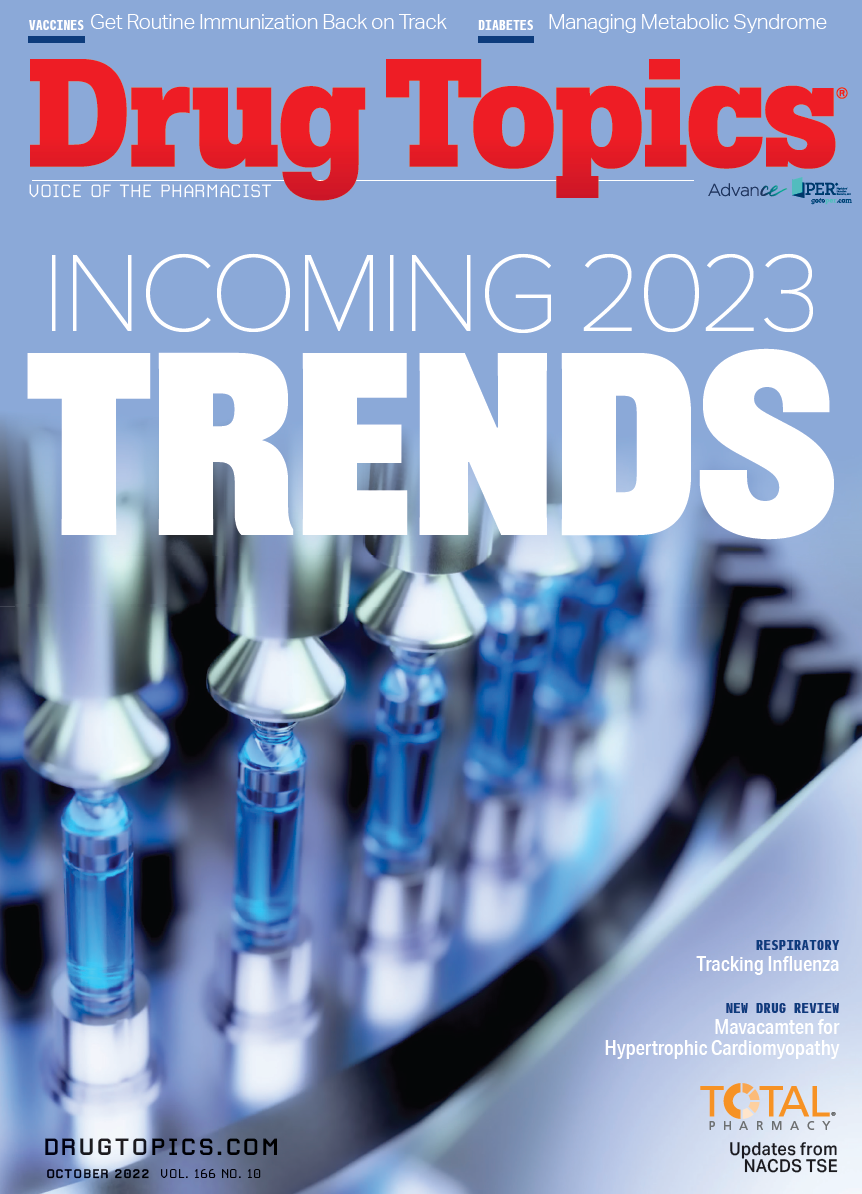First-in-Class Treatment for Obstructive Hypertrophic Cardiomyopathy Is Approved by FDA
Mavacamten improves functional capacity and symptoms in adults with New York Heart Association class II-III obstructive HCM.
Hypertrophic cardiomyopathy (HCM) occurs when the walls of the left ventricle become enlarged and thicken. In obstructive HCM, impaired blood flow in the heart can result in chest pain, dyspnea, syncope, and edema. Untreated HCM can lead to atrial fibrillation, stroke, or heart failure (HF).1 Although current treatments may help relieve symptoms, they do not address the underlying pathology. Mavacamten, the first-in-class cardiac myosin inhibitor approved by the FDA in April 2022,2 prevents myosin-actin cross-bridge formation in cardiac muscles, targeting the pathophysiology of obstructive HCM. By reducing cardiac contractility and dynamic left ventricular outflow tract (LVOT) and improving cardiac filling pressures, mavacamten improves functional capacity and symptoms in adults with New York Heart Association (NYHA) class II-III obstructive HCM.
Efficacy
Investigators for the phase 3, double-blind, randomized, placebo-controlled, parallel-group EXPLORER-HCM clinical trial (NCT03470545)3 enrolled 251 adult participants with symptomatic (NYHA class II or III) obstructive HCM, and with a left ventricular ejection fraction (LVEF) of 55% or greater and LVOT peak gradient of 50 mm Hg or greater at baseline. For 30 weeks, each patient received either mavacamten or placebo. The primary study end point was composite, examining clinical response at week 30; this was defined as an increase of 1.5 mL/kg/min pVO2 or greater plus an improvement of 1 or higher in NYHA class, or an increase of 3.0 mL/kg/min pVO2 or greater and an unchanged NYHA class.
At week 30, 37% of patients in the mavacamten group met the primary end point vs 17% in the placebo group. The mavacamten group also demonstrated improvements in all secondary end points vs placebo; these end points and differences between the 2 groups included postexercise LVOT gradient (–35.6), pVO2 (1.4), and NYHA class (34% more patients improved by at least 1 class).
Improvements in patient-reported outcomes measured by the Kansas City Cardiomyopathy Questionnaire-Clinical Summary Score and Hypertrophic Cardiomyopathy Symptom Questionnaire score for shortness of breath were also higher with mavacamten therapy.
Safety
Overall, patients in the EXPLORER-HCM trial tolerated mavacamten well; in the placebo group, patients more frequently experienced dizziness (27% vs 18%) and syncope (6% vs 2%).
Mavacamten has a boxed warning for HF risk due to systolic dysfunction4 and is only available through the Camzyos Risk Evaluation and Mitigation Strategy program. Prior to treatment, patients must undergo an echocardiogram to assess LVEF. If LVEF is less than 55%, treatment is contraindicated; if LVEF is less than 50% or HF symptoms occur, treatment should be held. During treatment, LVEF should be tested at every 4 weeks initially and every 12 weeks once the maintenance dose has been established. Concomitant mavacamten and disopyramide use with either verapamil or diltiazem is also associated with increased HF risk. Mavacamten is contraindicated with moderate to strong cytochrome P450 (CYP) 2C19 inducers and inhibitors, moderate to strong CYP3A4 inducers, and strong CYP3A4 inhibitors.
Dosing
Mavacamten is available as 2.5-mg, 5-mg, 10-mg, and 15-mg once-daily capsules. The recommended starting dose is 5 mg; titration is based on Valsalva LVOT gradient targets and LVEF assessments. If LVEF decreases below 50%, treatment should be interrupted. After 4 weeks, if LVEF is 50% or greater, treatment may be restarted at a lower dose. Patients can take mavacamten with or without food; capsules should not be crushed, chewed, or opened. Close monitoring is recommended when initiating other medications that are CYP2C19 or CYP3A4 substrates.
References
- Hypertrophic cardiomyopathy (HCM). American Heart Association. Updated May 13, 2022. Accessed September 14, 2022. https://www.heart.org/en/health-topics/cardiomyopathy/what-is-cardiomyopathy-in-adults/hypertrophic-cardiomyopathy
- US Food and Drug Administration approves Camzyos (mavacamten) for the treatment of adults with symptomatic New York Heart Association Class II-III obstructive hypertrophic cardiomyopathy (HCM) to improve functional capacity and symptoms. News release. Bristol Myers Squibb. April 28, 2022. Accessed September 14, 2022. https://news.bms.com/news/details/2022/U.S.-Food-and-Drug-Administration-Approves-Camzyos-mavacamten-for-the-Treatment-of-Adults-With-Symptomatic-New-York-Heart-Association-Class-II-III-ObstructiveHypertrophic-Cardiomyopathy-HCM-to-Improve-Functional-Capacity-and-Symptoms/default.aspx
- Olivotto I, Oreziak A, Barriales-Villa R, et al; EXPLORER-HCM study investigators. Mavacamten for treatment of symptomatic obstructive hypertropic cardiomyopathy (EXPLORER-HCM): a randomized, double-blind, placebo-controlled, phase 3 trial. Lancet. 2020;396(10253):759-769. doi:10.1016/S0140-6736(20)31792-X
- Camzyos. Prescribing information. Bristol Myers Squibb; 2022. Accessed September 14, 2022. https://www.accessdata.fda.gov/drugsatfda_docs/label/2022/214998s000lbl.pdf
